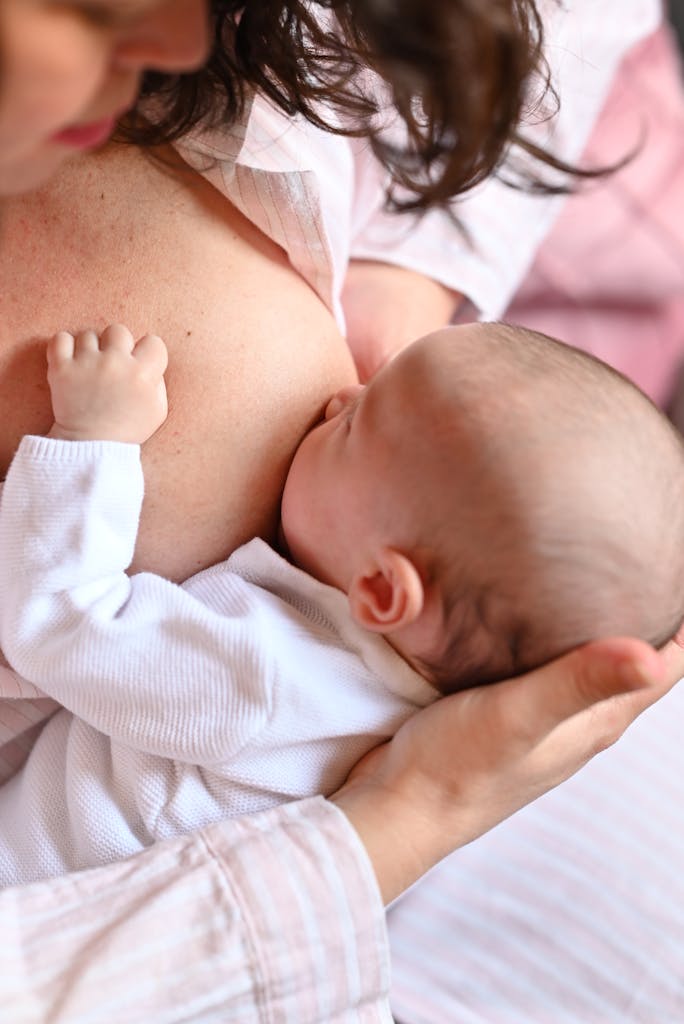First Signs of Mastitis: Early Warning Signals You Shouldn’t Ignore (2025 Guide)

According to the CDC, up to 10% of breastfeeding mothers develop mastitis, but recognizing early signs can prevent serious complications. Many moms attribute their fatigue to being a mom of a newborn and their breast pain to engorgement and they miss the important early signs that can be addressed early to prevent needing more intervention.
Pay attention to your body. Rest when your body tells you, hydrate more than you think you need to, and empty those breasts consistently with feedings.
If you miss those early signs of breast inflammation, then the infection comes into play. An infection requires antibiotics and a visit to your OB office. If not treated quickly it can progress into an abscess which would mean more interventions. It can also affect your milk supply.
This guide will help you know what to watch for and how to prevent mastitis from progressing. Remember, always consult your provider and follow their guidance.
What is Mastitis and Why Early Detection Matters
- Mastitis is an infection of the breast tissue, typically caused by bacteria entering through a cracked nipple, leading to inflammation, pain, redness, and sometimes fever. Normal breast changes, such as swelling or tenderness, are often linked to hormonal fluctuations and new milk onset, and are typically not accompanied by fever or localized redness. In contrast, mastitis involves a localized area of inflammation, which may progress to an abscess if untreated.
- Early intervention, including antibiotics and proper drainage, is crucial, as untreated mastitis can lead to severe complications, including chronic infection or the formation of an abscess. Statistics indicate that while most cases of mastitis respond to treatment, approximately 10-20% of women may experience progression to abscess formation if the infection is not addressed promptly.
The First Physical Signs of Mastitis
- Breast tenderness and pain
- Skin changes and redness
- Temperature changes in the breast
- Lumps and hard areas (clogged milk ducts)
- Changes in breast texture
Early Body Symptoms That Signal Mastitis
- Low-grade fever onset
- Body aches and chills
- Fatigue levels increase
- Flu-like symptoms
- Lymph node changes
- Lumps in your armpits
Changes in Milk and Supply That May Indicate Mastitis
- Milk appearance changes- thick, clumpy
- Supply fluctuations- decrease
- Painful letdown on one side
- Blocked duct sensations- painful lump
- Pumping output changes- decreased
When to Call Your Healthcare Provider
- Temperature thresholds (>100.4)
- Pain in the breast in a localized area
- Duration of symptoms (>24 hours)
- Red flag symptoms- abscess present, fever, redness on the breast
- Emergency situations- lethargy, severe dehydration
Early Intervention Steps When You Spot Signs
- Immediate care steps
- Feeding positions to try
- change positions to empty different ducts
- football hold, cross-cradle, side lying, sitting upright
- change positions to empty different ducts
- Home care techniques
- Rest requirements- sleep between feedings
- Support system activation
- Ask for help from friends and family
- Seek information from IBCLC or OB
Prevention Tips After Spotting Early Signs
- Adjust feeding frequency if needed- smaller more frequent feedings can help
- Breast emptying techniques- drain affected side first
- Clothing considerations
- Avoid underwire bras while nursing
- Choose well-fitting but not tight nursing bras
- Remove restrictive clothing before sleep
- Change wet nursing pads frequently
- Lifestyle modifications
- Stay well-hydrated (aim for 8-10 glasses daily)
- Get adequate rest when possible
- Maintain a healthy diet rich in anti-inflammatory foods
- Practice stress-management techniques
- A warm compress, or shower prior to emptying the breast, then cool compress after emptying the breast can help
- Professional support options
- OB for antibiotics if needed
- IBCLC for help in supply and latch

Conclusion:
- Key warning signs:
- reas of hardness in the breast
- Localized tenderness
- Warm spots
- Reduced milk flow
- Skin redness
- General discomfort
- Quick action is important:
- Rest
- Hydrate
- Feed baby
- Ibuprofen to reduce inflammation
- Be proactive in monitoring for infection
- Take temperature
- Monitor supply
- Watch for increased pain, lymph nodes
- If you have further questions reach out to your OB and lactation support
https://pmc.ncbi.nlm.nih.gov/articles/PMC7465810
